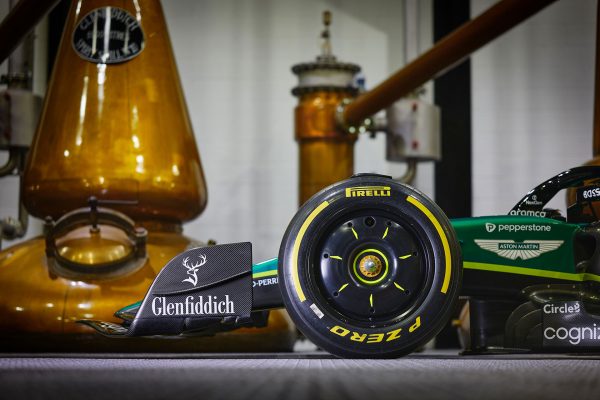Canadian Grand Prix: History, circuit and legendary drivers
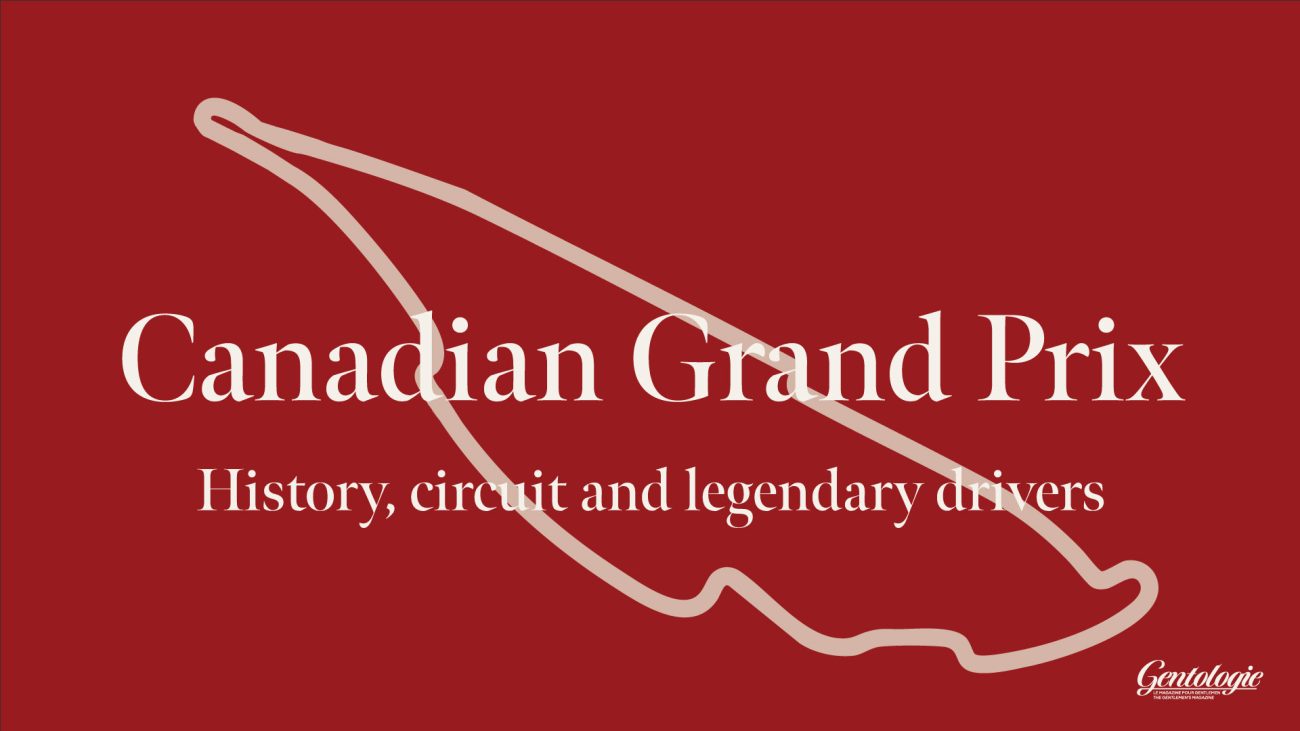
Although we have published a few articles on the Canadian Grand Prix, including one on the new facilities, we have not yet devoted an article to the history of the event, from its beginnings to the present day. We’re going to remedy that right now.
History of the Canadian Grand Prix
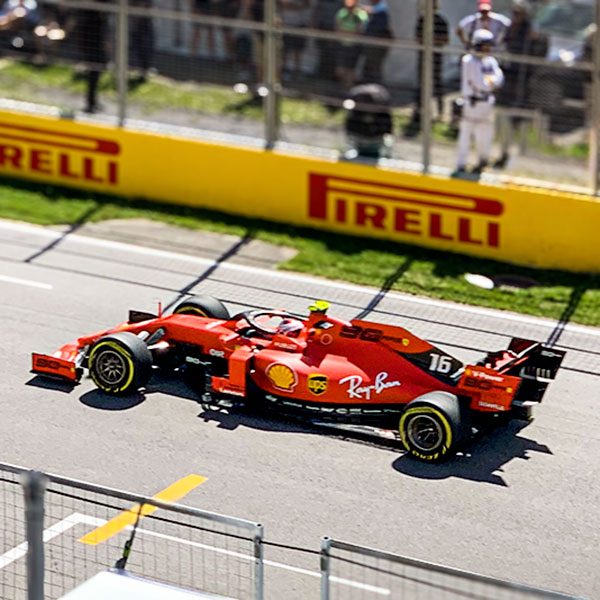
Charles Leclerc’s Ferrari at the Canadian Grand Prix
Photo: Normand Boulanger | Gentologie
The origins of the Canadian Grand Prix (1961–1970)
The first edition of the Formula 1 Canadian Grand Prix took place in 1967 on the Mosport Park circuit in Ontario. In 1968, it was the Mont-Tremblant circuit in Quebec that hosted the Grand Prix. Returning to Ontario in 1969, the event made a final stop at Mont-Tremblant in 1970.
The remaining of the Mosport years and the move to Montréal (1971–1977)
From 1971 to 1977, the Canadian Grand Prix returned to the Mosport circuit. It was cancelled in 1975 for financial reasons. At the time, the organizers were unable to raise the necessary funds to host the race to the safety and organizational standards required by Formula 1. This followed tensions over the distribution of costs between the various levels of government (federal, provincial, municipal) and the promoters. The last winner was Jody Scheckter in his Wolf in 1977.
Although the drivers appreciated the charm of this circuit laid out in a hilly area, it no longer met the safety standards inherent in Formula 1. The Europeans described the narrow, dangerous track as an “obsolete circuit.” A dramatic accident involving driver Ian Ashley set off a cascade of events that culminated, a year later, in the inauguration of a brand new racing facility, built in just a few months on Île Notre-Dame.
The arrival of the Canadian Grand Prix in Montréal and the creation of the Gilles Villeneuve circuit (1978)
The arrival of the Canadian Grand Prix on Île Notre-Dame was the brainchild of Briton Roger Peart. A lifelong motor racing enthusiast, he was already frequenting British circuits at the age of 15 as a mechanic. Later, with a degree in engineering, he emigrated to Canada, where it was not long before he was seen around the track, first as a driver, then as a race steward.
Because of his experience and background, in the autumn of 1977 the Labatt brewery, which was sponsoring the race at the time, asked him to find a new venue in Montréal for the next Canadian Grand Prix. By December 1977, there was talk of a race in Montréal (there was talk of a track around the Olympic Stadium and even in Laval!) and plans to build a track on the islands of Parc Jean-Drapeau.
After a winter spent developing the best possible route, the British engineer travelled to Europe to have the plans approved by the FIA. On 26 April 1978, the Montréal Executive Committee approved the project and, in May 1978, following a meeting in Monaco, approval was granted and construction began shortly afterwards, on 20 June 1978.
Canadian Grand Prix Highlights and Drama
The first Grand Prix in Montréal was held on 8 October 1978 and was won by Gilles Villeneuve, who scored his first victory since his debut at his home Grand Prix. On 8 May 1982, Villeneuve was killed during practice for the Belgian Grand Prix and the Île Notre-Dame track was named after him.
The circuit has been modified several times to make it safer and more competitive. The track is characterized by demanding acceleration and braking, alternating short straights for overtaking and tight corners. Throughout the race, braking systems and gearboxes are subjected to high levels of stress.
As early as 1979, certain bends were modified to improve the flow of traffic. Despite these improvements, the fatal accident of Italian driver Riccardo Paletti, at the wheel of an Osella, on the grid at the start of the 1982 Canadian Grand Prix remains a landmark event. At the start of the race, Didier Pironi, in the lead in his Ferrari, stalled his engine. The majority of the drivers managed to avoid the stationary car, but Paletti, who was starting from the back of the grid, collided with it at high speed, resulting in his death.
The Canadian Grand Prix was cancelled in 1987 due to a dispute between the organizers and Formula 1, more specifically the Formula One Constructors Association (FOCA), headed by Bernie Ecclestone. The dispute concerned the presence of the race’s sponsor, Labatt, a Canadian brewery, which conflicted with FOCA’s commercial rights to John Player Special, a British cigarette manufacturer. In the absence of a commercial agreement, the race was withdrawn from the calendar.
Then, taking advantage of this interruption, major work was carried out to move the start-finish line further west, while adding new permanent garages and a new pit lane. Previously, the start was given just after the hairpin and the teams were housed in temporary facilities. The new facilities offered a dedicated area for media representatives.
Upgrading the Gilles Villeneuve track to a state-of-the-art facility.
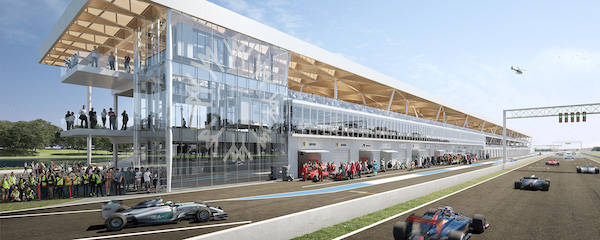
The Espace Paddock at Canadian Grand Prix
Photo: Société du Parc Jean-Drapeau
Following the death of Ayrton Senna on 1 May 1994 in San Marino, Italy, a chicane was added for safety reasons after the hairpin, on the site of the old starting line. Subsequently, in 1996, this chicane was removed, as was the Casino bend halfway between the hairpin and the entrance to the pits.
As a result, a spectacularly long straight along the Olympic Basin was created, where drivers reached speeds of over 300 km/h. This straight ends abruptly at a tight chicane bordered by a wall that has become famous: the “Wall of Champions.” This wall owes its name to the many world champions, such as Jacques Villeneuve, Michael Schumacher, Damon Hill, Jenson Button and Sebastian Vettel, who have met there over the years. At the turn of the 21st century, it became clear that Formula 1 had evolved and that the garages built in the 1980s no longer met the needs of the teams and their equipment.
In 2009, the Canadian Grand Prix was withdrawn from the Formula 1 calendar following a second financial dispute between the local organizers and Formula One Management.
Bernie Ecclestone demanded higher sanctioning fees to keep the race in Montréal. In the absence of an agreement on the sums requested, the race was cancelled. It was the first time since 1987 that the Grand Prix was not on the calendar, and it marked F1’s only absence from North America that year. The race returned the following year, in 2010, after a new agreement was reached between the governments (municipal, provincial and federal) and the organizers, ensuring that the Grand Prix would be held until 2014 (and subsequently extended).
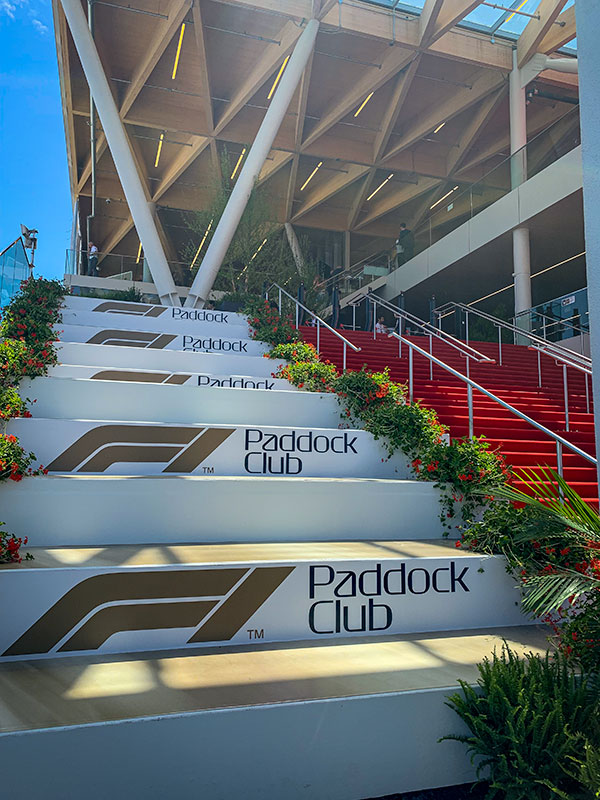
The entrance to the Espace Paddock and the Paddock Club at the Canadian Grand Prix
Photo: Normand Boulanger | Gentologie
Finally, just after the close of the 2018 race, the old garages were demolished to make way for a new building designed to meet the requirements of the Formula 1 World Championship (FOWC) and the Fédération Internationale de l’Automobile (FIA). Designed by the architectural firm FABG, the new three-story structure boasts state-of-the-art garages, a cutting-edge media hub, a modern control tower, innovative storage units, and a spacious rooftop observation deck. For more details, please read this article.
The 2024 edition was punctuated by several glitches due to the weather, the weatherproofing of the new facilities and security (not to mention the episode with the terraces), so much so that Formula 1 has issued very specific criteria for 2025 so that the organization can continue to stage the Grand Prix in the future.
The Circuit Gilles-Villeneuve has evolved while remaining faithful to its creator’s original design. Its layout remains current and even refreshing compared to more recently designed tracks that seem to lack character. Although it is an urban circuit, located close to the city centre and accessible by metro, it is nonetheless an authentic Formula 1 circuit, originally designed for that purpose alone.
Circuit Gilles-Villeneuve technical specifications
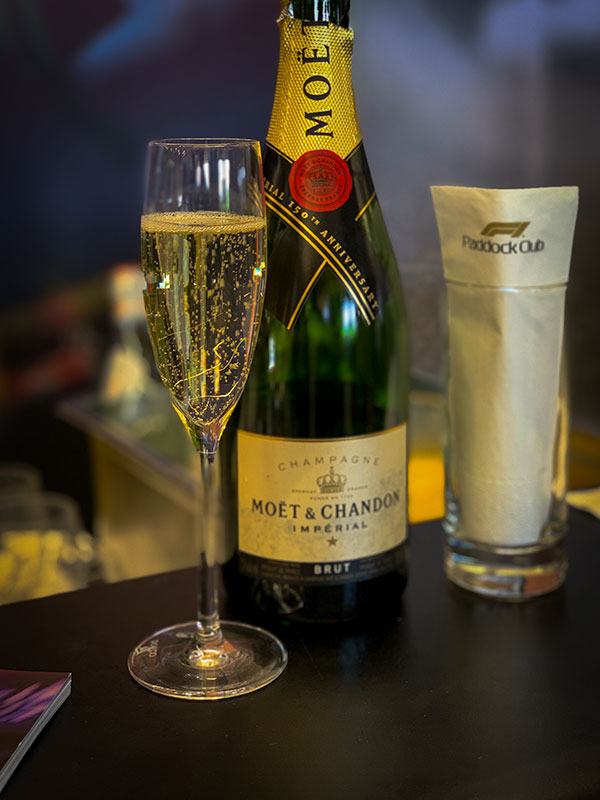
Moët & Chandon champagne has been the official champagne of Formula 1 since 2025
Photo: Normand Boulanger | Gentologie
Circuit Gilles Villeneuve measures 4361 metres (4,361 kilometres). The record time for a lap is 1′13″078, set by Valtteri Bottas (Mercedes) in 2019. The record time for a race lap is 1′14″481, held by Sergio Pérez (Red Bull) since 2023. The record time for pole position has been held by Sebastian Vettel (Ferrari) since 2018, with a time of 1′10″240. Michael Schumacher and Lewis Hamilton both hold the record for the most wins in Montréal, with seven titles each. The manufacturer’s title in Montréal is held by Ferrari, with eleven victories.
Circuit Gilles-Villeneuve is renowned for its smooth, top-quality asphalt surface, which is rigorously maintained to meet the requirements of the Fédération Internationale de l’Automobile (FIA) and to encourage the extreme performance of single-seaters in competition. It has fourteen corners (six left and eight right) and two DRS sections. To win the title, drivers must complete all seventy laps, a total of 305.27 kilometres, which is fifty kilometres more than the distance between Montréal and Québec City.
A Grand Prix Committed to the Environment
In addition, for 2025, Octane Racing Group, the official promoter of the Formula 1 Pirelli Grand Prix of Canada, has obtained the prestigious 3-star environmental certification from the Fédération Internationale de l’Automobile (FIA). This international recognition, the highest distinction awarded by the FIA in terms of sustainable development, underlines the organization’s rigorous commitment to reducing the event’s environmental footprint.
Winners of the Canadian Grand Prix
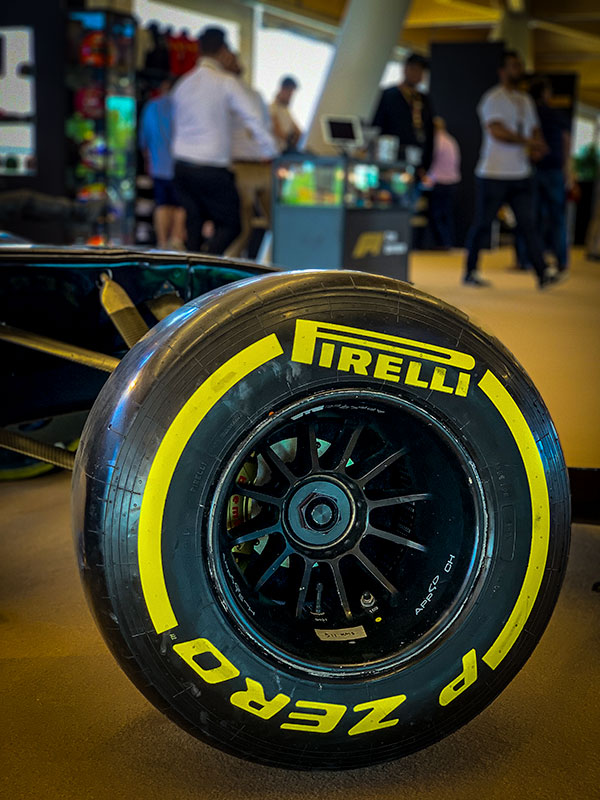
Pirelli P Zero tyres. Pirelli is the title sponsor of the Canadian Grand Prix.
Photo: Normand Boulanger | Gentologie
Mosport Park
- 1961 – Peter Ryan – Lotus-Climax
- 1962 – Masten Gregory – Lotus-Climax
Mont-Tremblant
- 1963 – Pedro Rodríguez – Ferrari
- 1964 – Pedro Rodríguez – Ferrari
- 1965 – Jim Hall – Chaparral-Chevrolet
- 1966 – Mark Donohue – Lola-Chevrolet
- 1967 – Jack Brabham – Brabham-Repco
Mont-Tremblant
- 1968 – Denny Hulme – McLaren-Ford
Mosport Park
1969 – Jacky Ickx – Brabham-Ford
Mont-Tremblant
- 1970 – Jacky Ickx – Ferrari
Mosport Park
- 1971 − Jackie Stewart − Tyrrell-Ford
- 1972 − Jackie Stewart − Tyrrell-Ford
- 1973 − Peter Revson − McLaren-Ford
- 1974 − Emerson Fittipaldi − McLaren-Ford
- 1975 − Non raced
- 1976 − James Hunt − McLaren-Ford
- 1977 − Jody Scheckter − Wolf-Ford
Île Notre-Dame
- 1978 − Gilles Villeneuve − Ferrari
- 1979 − Alan Jones − Williams-Ford
- 1980 − Alan Jones − Williams-Ford
- 1981 − Jacques Laffite − Ligier-Matra
Circuit Gilles-Villeneuve (formerly Île Notre-Dame Circuit)
- 1982 − Nelson Piquet − Brabham-BMW
- 1983 − René Arnoux − Ferrari
- 1984 − Nelson Piquet − Brabham-BMW
- 1985 − Michele Alboreto − Ferrari
- 1986 − Nigel Mansell − Williams-Honda
- 1987 − Non raced
- 1988 − Ayrton Senna − McLaren-Honda
- 1989 − Thierry Boutsen − Williams-Renault
- 1990 − Ayrton Senna − McLaren-Honda
- 1991 − Nelson Piquet − Benetton-Ford
- 1992 − Gerhard Berger − McLaren-Honda
- 1993 − Alain Prost − Williams-Renault
- 1994 − Michael Schumacher − Benetton-Ford
- 1995 − Jean Alesi − Ferrari
- 1996 − Damon Hill − Williams-Renault
- 1997 – Michael Schumacher – Ferrari
- 1998 – Michael Schumacher – Ferrari
- 1999 – Mika Häkkinen – McLaren-Mercedes
- 2000 – Michael Schumacher – Ferrari
- 2001 – Ralf Schumacher – Williams-BMW
- 2002 – Michael Schumacher – Ferrari
- 2003 – Michael Schumacher – Ferrari
- 2004 – Michael Schumacher – Ferrari
- 2005 – Kimi Räikkönen – McLaren-Mercedes
- 2006 – Fernando Alonso – Renault
- 2007 – Lewis Hamilton – McLaren-Mercedes
- 2008 – Robert Kubica – BMW Sauber
- 2009 – Non raced
- 2010 – Lewis Hamilton – McLaren-Mercedes
- 2011 – Jenson Button – McLaren-Mercedes
- 2012 – Lewis Hamilton – McLaren-Mercedes
- 2013 – Sebastian Vettel – Red Bull-Renault
- 2014 – Daniel Ricciardo – Red Bull-Renault
- 2015 – Lewis Hamilton – Mercedes
- 2016 – Lewis Hamilton – Mercedes
- 2017 – Lewis Hamilton – Mercedes
- 2018 – Sebastian Vettel – Ferrari
- 2019 – Lewis Hamilton – Mercedes
- 2020-2021 – Cancelled due to the COVID-19 pandemic
- 2022 – Max Verstappen – Red Bull
- 2023 – Max Verstappen – Red Bull-Honda RBPT
- 2024 – Max Verstappen – Red Bull-Honda RBPT
The 2025 event is scheduled for June 13th through the 15th. You can buy tickets here.
In this article, we will provide tips for gentlemen attending the Canadian Grand Prix.



